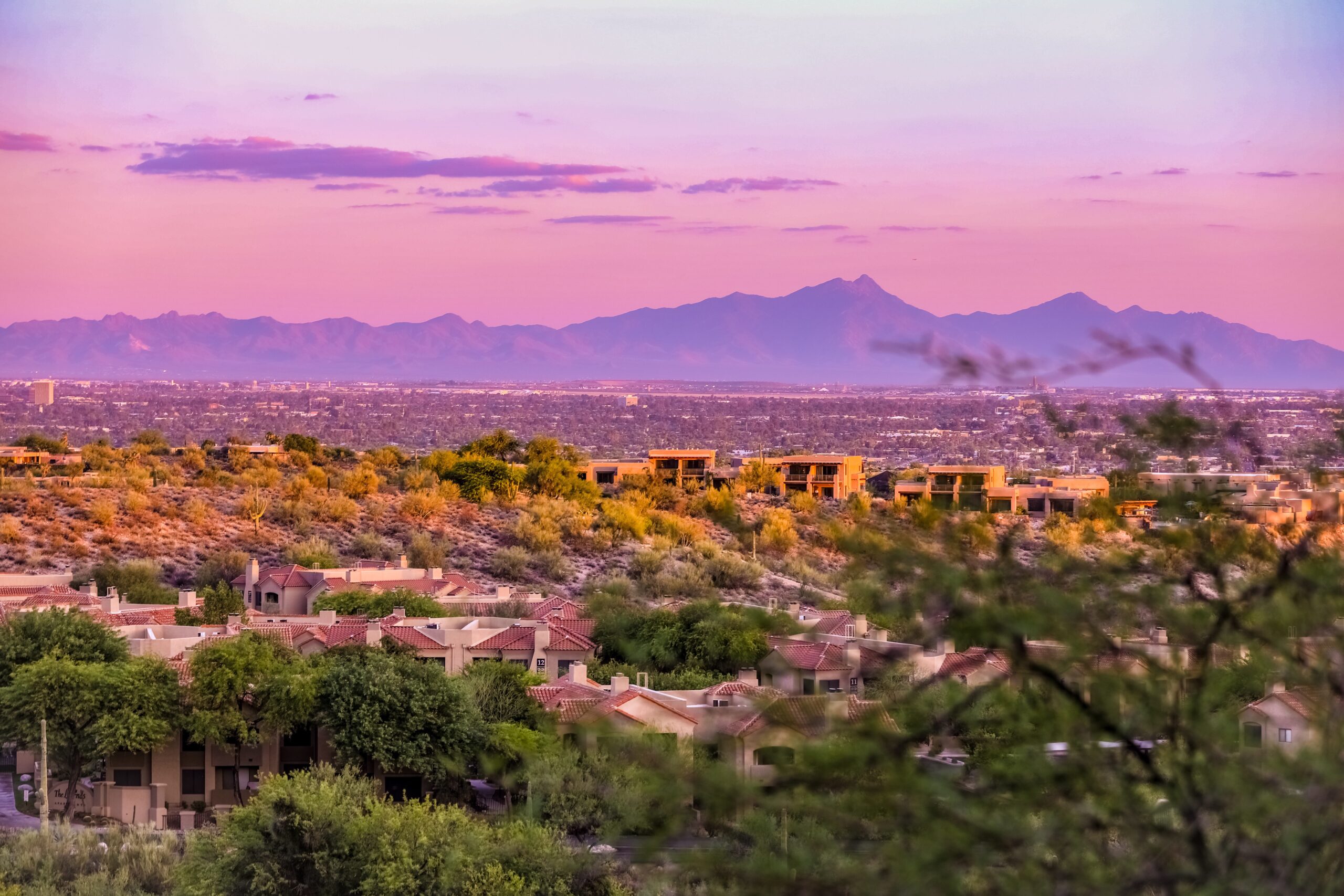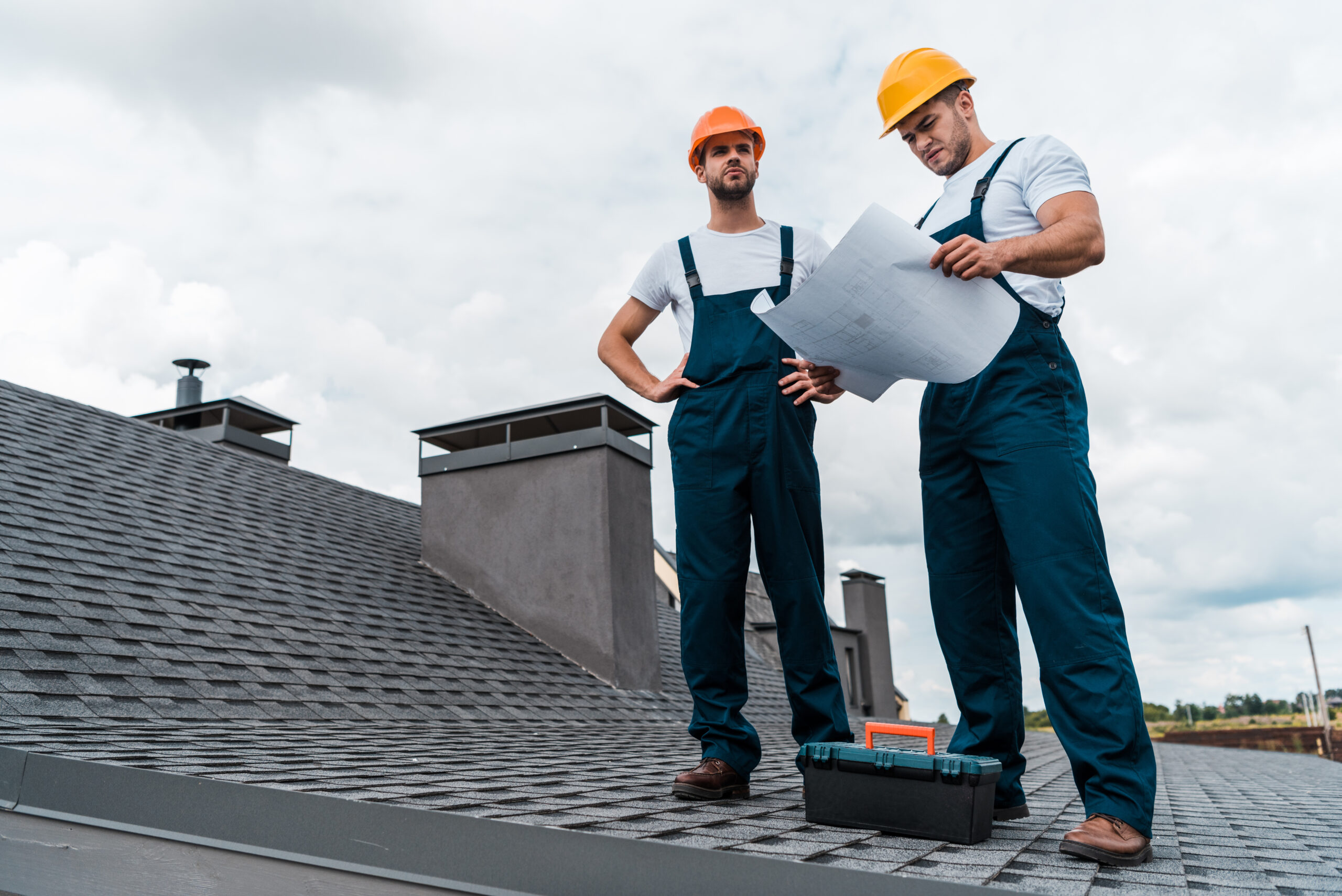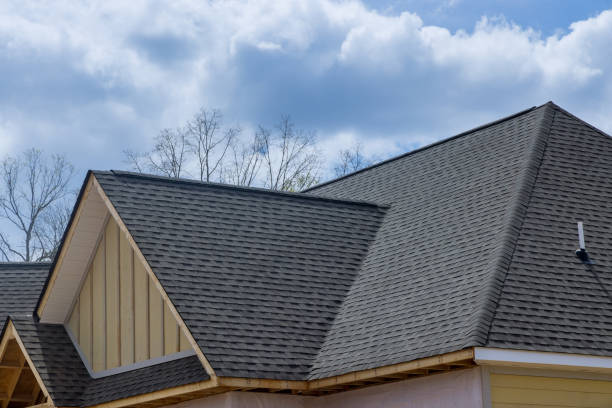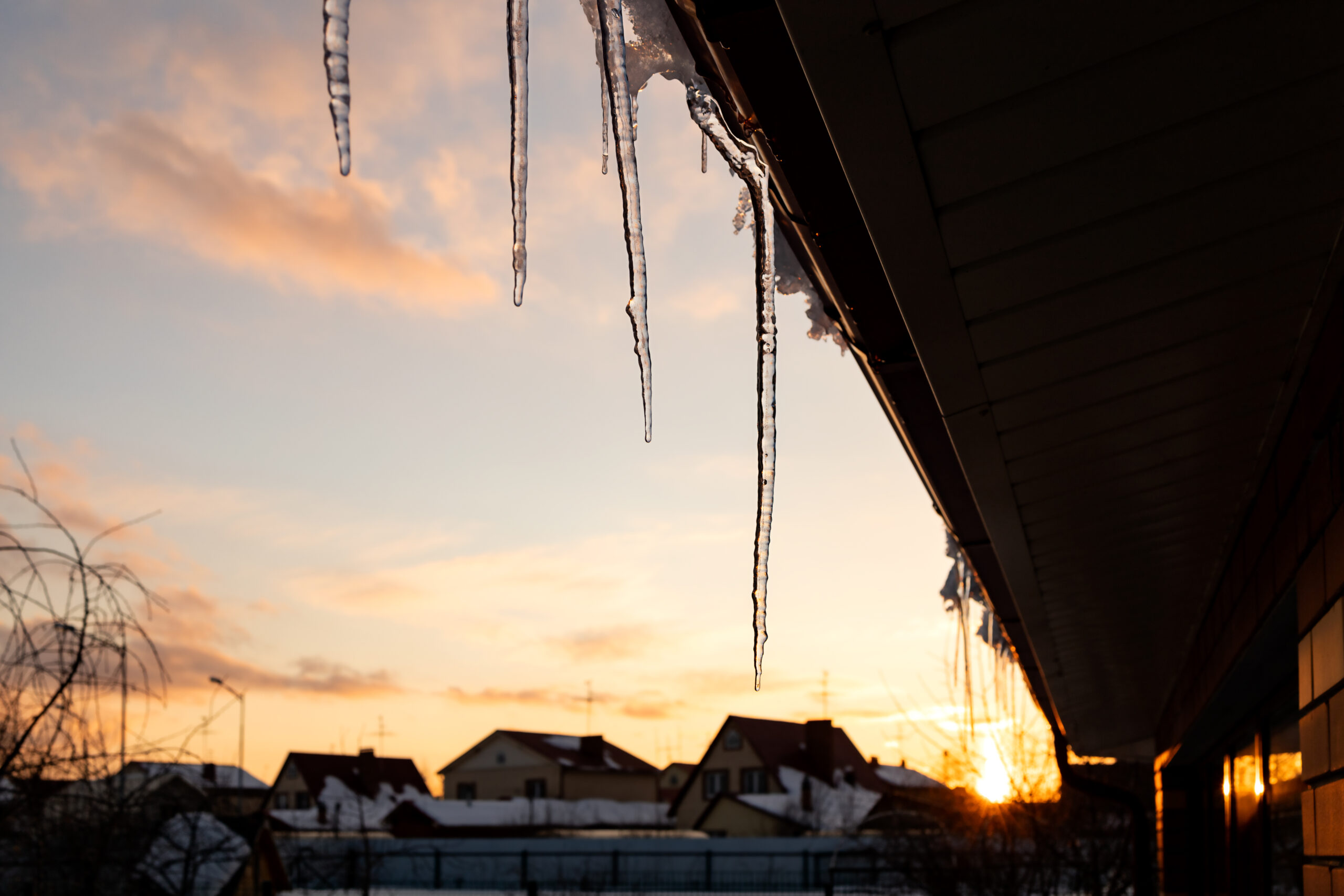Desert Wildlife You Don’t Want on Your Roof (And How to Keep Them Away)
Cave Creek, Arizona, is home to stunning desert vistas, breathtaking sunsets, and… let’s just say, some unwanted houseguests. The desert’s abundant wildlife might look great in nature documentaries, but when these critters decide to turn your roof into their penthouse suite, it’s a whole different story. Here’s a rundown of the desert wildlife you don’t want on your roof and how to keep them from making themselves at home.
1. Rascally Roof Rattlers

Yes, snakes. While they typically prefer the ground, it’s not unheard of for them to find their way onto roofs. Desert snakes might be looking for shade or chasing prey like birds or rodents. But one thing’s for sure: you don’t want to hear slithering while you’re sipping your morning coffee.
How to Keep Them Away:
- Trim tree branches that could act as a snake ladder to your roof.
- Seal gaps and cracks where snakes could slither inside.
- Keep rodent populations in check, so your roof doesn’t become a buffet.
2. Persistent Pigeons

Pigeons might look harmless, but don’t be fooled. These feathered freeloaders can turn your roof into a messy disaster zone. Their droppings are acidic and can damage roofing materials over time—not to mention they’re just plain gross.
How to Keep Them Away:
- Install bird spikes or netting to make your roof less inviting.
- Use decoys, like owls, to scare them off (though some pigeons are braver than you’d think!).
- Regularly clean gutters and ledges to remove nesting materials.
3. Rowdy Raccoons

Raccoons may look cute with their little bandit masks, but don’t let that fool you. They’re mischievous and strong enough to tear up shingles, vents, and even roofing underlayment in search of food or shelter.
How to Keep Them Away:
- Secure trash cans to avoid tempting them.
- Ensure your attic is sealed tight—no gaps or loose vents.
- Install motion-activated lights or sprinklers to startle these furry invaders.
4. Bold Bats

Bats are great for controlling insects, but the last thing you want is a colony roosting in your roofline. Their droppings (guano) can create a health hazard, and they’re notoriously hard to evict once they’ve settled in.
How to Keep Them Away:
- Install bat boxes away from your home to give them an alternative roosting spot.
- Seal entry points, especially in eaves and vents.
- Use fine mesh screens to block access without affecting ventilation.
5. Sneaky Squirrels
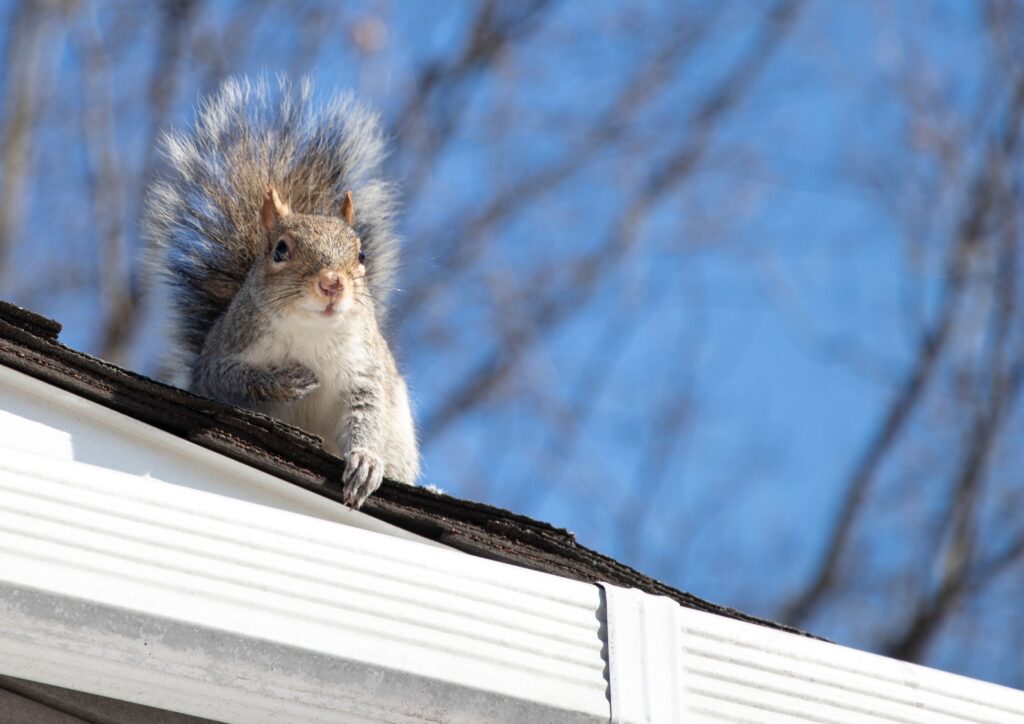
Squirrels in the desert? You bet! These agile critters can leap onto your roof from nearby trees, chew through wood, and create cozy nests in your attic.
How to Keep Them Away:
- Trim overhanging tree branches to eliminate easy access.
- Use metal flashing to cover vulnerable areas like corners and vents.
- Apply squirrel repellents around entry points (but be kind—no traps, please!).
6. Crafty Coyotes

While it’s rare, coyotes have been known to climb onto low-slope roofs. Why? Because they’re opportunistic hunters or just curious. Imagine looking out your window to see a coyote lounging on your roof like it owns the place.
How to Keep Them Away:
- Install fencing around your property if coyotes are a regular concern.
- Keep pet food and water dishes indoors.
- Motion-activated deterrents can help keep these wild wanderers at bay.
7. Determined Desert Rats

Roof rats are infamous in desert areas. These nocturnal pests can chew through wiring, shingles, and insulation—creating a costly headache for homeowners.
How to Keep Them Away:
- Eliminate food sources like fallen fruit or birdseed near your home.
- Use metal mesh to seal entry points.
- Set traps or call pest control if you suspect an infestation.
Roof Defense 101
Your roof is your home’s first line of defense, so it’s essential to keep it critter-free. Here are some general tips to protect your roof from wildlife:
- Regular Inspections: Schedule routine roof inspections to catch potential entry points early.
- Roof Maintenance: Repair loose shingles, cracked tiles, or damaged vents promptly.
- Professional Help: When in doubt, call a roofing or pest control professional to assess the situation.
Almeida Roofing Inc. 📞 602-743-3175
Living in Cave Creek means embracing the desert lifestyle—but that doesn’t mean sharing your roof with the local wildlife. By taking proactive steps, you can keep your home safe, your roof intact, and your sanity in check. After all, your roof should be a fortress, not a zoo exhibit.
Need help protecting your roof from wildlife? Give us a call! Our expert team is here to keep your roof in top shape, no matter what desert critters try to call it home.
Best Roofing Materials for Homes in Cave Creek, AZ: Keep Cool, Stay Stylish, and Survive the Desert
Living in Cave Creek, Arizona, means embracing the best of desert life: gorgeous sunsets, rugged mountain views, and, let’s face it, temperatures hot enough to bake cookies on your car dashboard. Your roof is your home’s first line of defense against these desert extremes, so choosing the right material isn’t just practical—it’s essential. Let’s break down the best roofing materials for your Cave Creek home, with a little humor to keep things light (unlike the summer heat).
1. Clay Tiles: The OG Desert Roof
Clay tiles are to desert homes what sunscreen is to Arizonans: a no-brainer. These classic terracotta beauties don’t just look great—they’re also ridiculously good at reflecting heat and keeping your home cool. Plus, they’re tough enough to handle Cave Creek’s infamous monsoon winds.
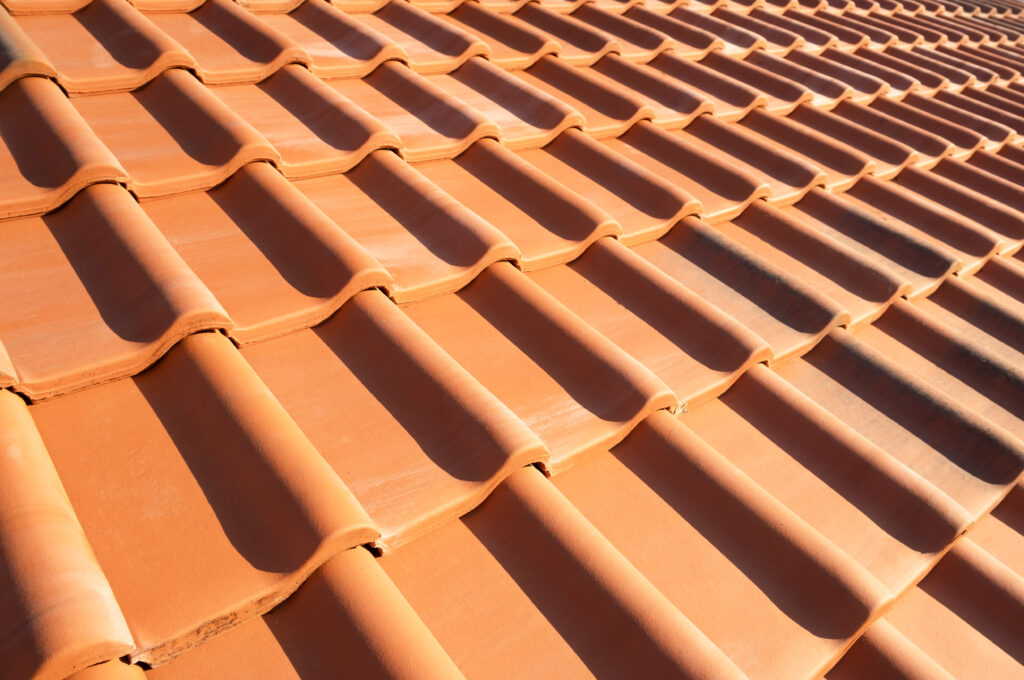
Pros:
✅ Excellent heat resistance
✅ Long lifespan (think decades, not years)
✅ Aesthetic charm that screams, “I belong in the desert!”
Cons:
❌ Heavy (your roof’s structure better hit the gym)
❌ Pricier upfront
2. Metal Roofs: Cool, Modern, and Practically Invincible
Metal roofs are like the superheroes of roofing. They’re durable, sleek, and can shrug off the intense Arizona sun without breaking a sweat. With reflective coatings, they’ll keep your home cooler than the other side of the pillow.
Bonus: they’re fire-resistant, which is great for our dry, brush-heavy surroundings.
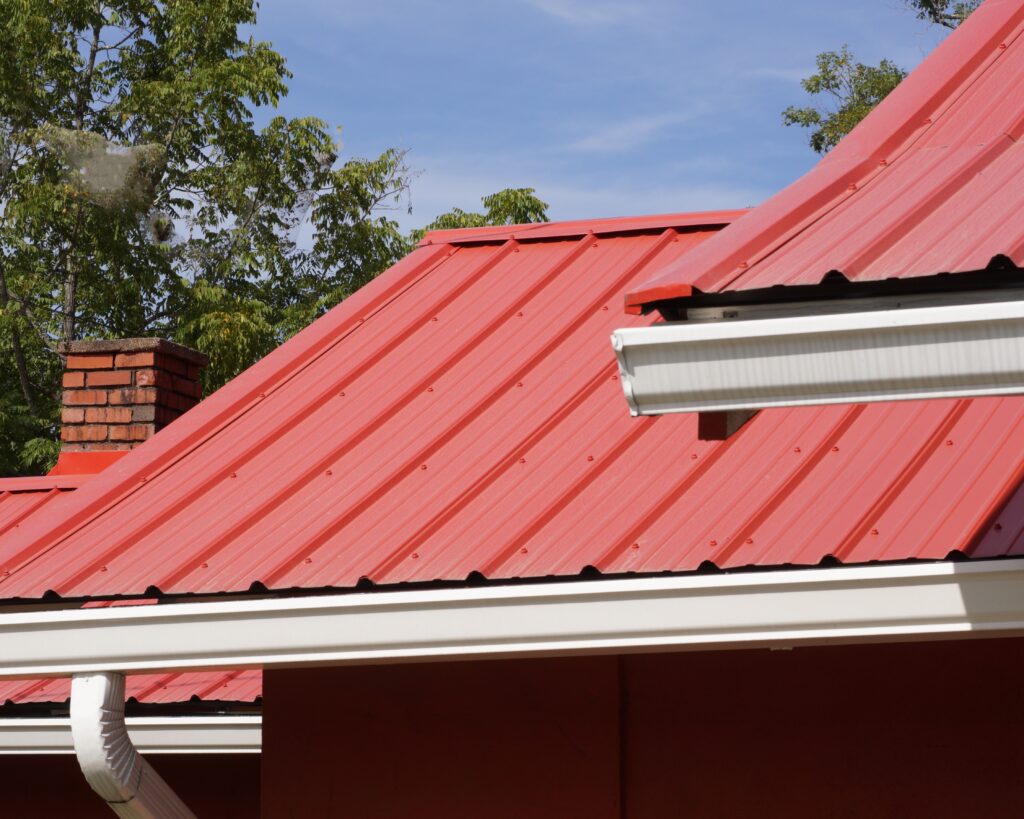
Pros:
✅ Lightweight yet durable
✅ Energy-efficient (your AC will thank you)
✅ Virtually maintenance-free
Cons:
❌ Can be noisy during hailstorms (but hey, it’s a built-in drum solo)
❌ Costs more than asphalt shingles
3. Asphalt Shingles: The Budget-Friendly Favorite
Asphalt shingles are the trusty sidekick of the roofing world. While they might not have the desert-specific superpowers of clay or metal, they’re affordable, versatile, and can be upgraded with UV-resistant coatings to make them desert-ready.
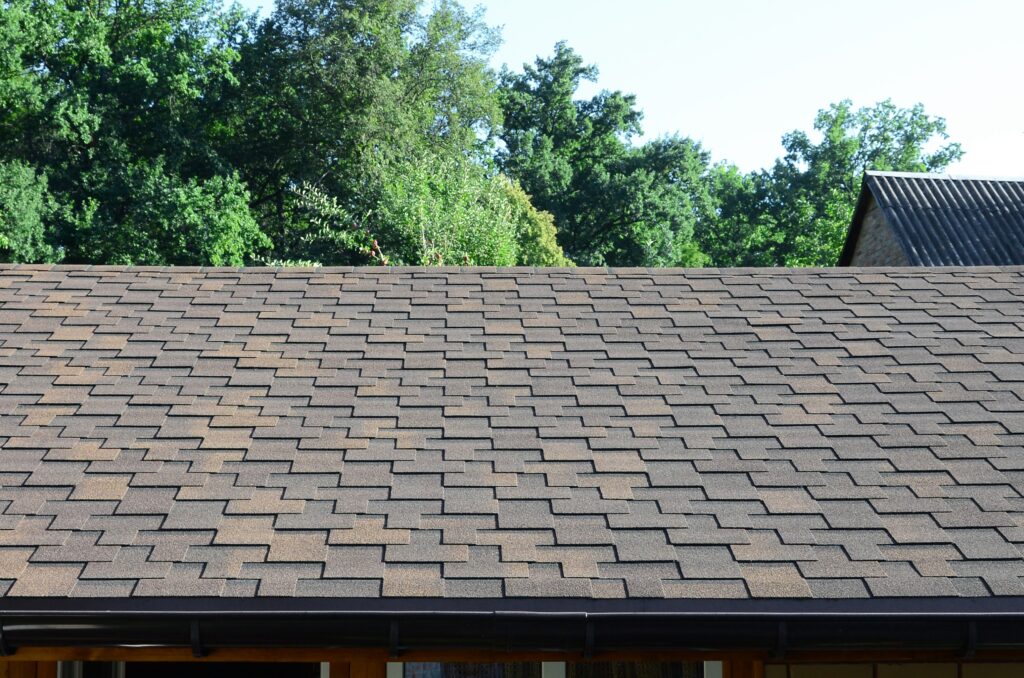
Pros:
✅ Affordable and easy to install
✅ Wide variety of colors and styles
✅ Suitable for most roof structures
Cons:
❌ Shorter lifespan in extreme heat (think 15-20 years)
❌ May require more frequent repairs
4. Flat Roofs with Reflective Coatings: The Modern Minimalist
Flat roofs are popular in Arizona for their sleek, modern aesthetic and practicality. When paired with reflective coatings or membranes, they become a desert powerhouse, reducing heat absorption and saving you money on cooling costs.

Pros:
✅ Space-efficient (perfect for solar panels!)
✅ Lower installation costs
✅ Energy-efficient with the right coatings
Cons:
❌ Requires proper drainage (because puddles in the desert are just ironic)
❌ Regular maintenance needed to prevent leaks
5. Concrete Tiles: The Heavyweight Champion
Concrete tiles are like clay tiles’ sturdier cousin who hits the gym every day. They offer similar aesthetic appeal and heat resistance but with even more durability—perfect for Cave Creek’s intense weather shifts.
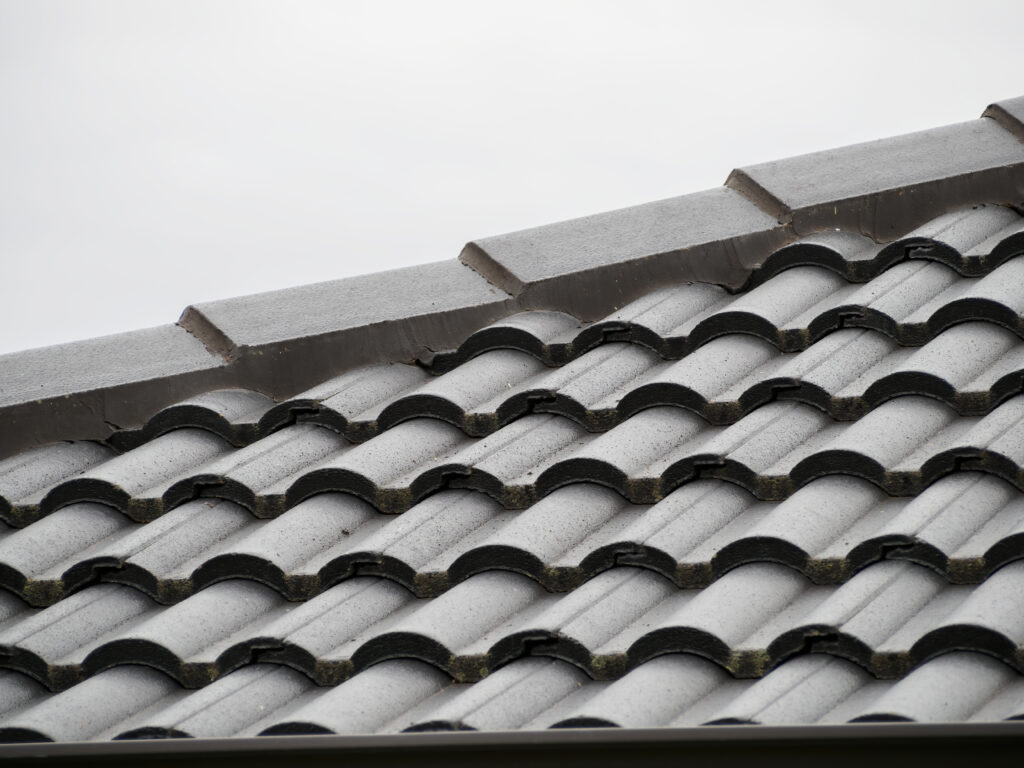
Pros:
✅ Extremely durable (monsoons? Bring it on!)
✅ Great insulation properties
✅ Stylish and long-lasting
Cons:
❌ Heavy (your roof’s structure needs to be up to code)
❌ More expensive than asphalt shingles
Final Thoughts: Pick the Roof That Fits Your Desert Life
Choosing the best roofing material for your Cave Creek home isn’t just about surviving the heat—it’s about thriving in style. Whether you’re drawn to the classic charm of clay tiles, the modern durability of metal, or the budget-friendly reliability of asphalt shingles, there’s a roof out there that’s perfect for you.
Need help deciding? As a family-owned roofing company in Cave Creek, we’ve got decades of experience (and plenty of sunscreen) to guide you to the right choice. Give us a call for a free estimate, and let’s get your home covered—literally.
Almeida Roofing Inc.
📞 602-743-3175
How to Choose a Reliable Roofer in Desert Hills
When it comes to protecting your home from the scorching sun and unpredictable monsoon storms in Desert Hills, Arizona, your roof is your first line of defense. Choosing a reliable roofing contractor is crucial to ensuring quality work that stands up to our unique desert climate. As a family-owned roofing company deeply rooted near the Desert Hills community, we’re here to guide you through the process of finding a roofer you can trust.
1. Start with Local Expertise
Hiring a local roofing company in Desert Hills has many advantages. Local contractors are familiar with the desert’s intense heat, high UV exposure, and seasonal weather challenges. They understand which roofing materials—like clay tiles, metal, or cool roofs—perform best in our environment. Plus, they’re just a call away if you need quick service.
2. Check Credentials and Insurance ✅✅✅
Always verify that the roofing company you hire is licensed, bonded, and insured. This protects both you and the contractor in case of accidents or unexpected issues. A legitimate roofing company will have no problem providing proof of their credentials.
Pro Tip: The Arizona Registrar of Contractors’ website is an excellent resource for verifying licenses.
3. Ask About Experience and Reviews ⭐⭐⭐⭐⭐
Experience matters when it comes to roofing. A company that’s been in business for years will have a proven track record of satisfied customers. Read reviews online, check their Better Business Bureau (BBB) rating, and ask for references from previous clients.
4. Get a Detailed Estimate 📄
Before signing a contract, ask for a written estimate that breaks down the costs for labor, materials, and any additional fees. Avoid contractors who give vague or overly low bids—they might cut corners or surprise you with hidden costs later.
5. Look for a Family-Owned Touch
Family-owned roofing companies often bring a personal touch and a commitment to customer satisfaction that larger corporations can’t match. They take pride in their reputation and treat every home as if it were their own. When you choose a local, family-run business, you’re supporting your community and getting service from people who genuinely care.
6. Ask About Warranties
A reliable roofing contractor should offer warranties for both their materials and workmanship. This demonstrates their confidence in the quality of their services and gives you peace of mind.
7. Communication is Key 📞
From your first inquiry to the completion of the project, clear communication is essential. A trustworthy roofer will answer your questions, explain the process, and keep you informed every step of the way.
Trust Your Local Desert Hills Roofing Experts- Almeida Roofing Inc.
Choosing the right roofer doesn’t have to be stressful. By focusing on local expertise, verified credentials, and excellent customer reviews, you can ensure your roofing project is in good hands. As a proud family-owned roofing company serving Desert Hills, Arizona, we’re here to provide expert guidance, top-quality workmanship, and personalized service.
Contact us today for a free estimate and let us help you protect your home with a roof that’s built to last. We’re your neighbors, and we’re here to help!

Should You Replace or Repair Your Roof This Year?
A new year brings fresh opportunities to tackle those home improvement projects you’ve been putting off. If your roof has been showing signs of wear and tear, you might be asking yourself: “Should I repair it or invest in a full replacement?” As a Phoenix-based roofing company, we understand the unique challenges Arizona’s climate presents for homeowners. Let’s dive into the factors to consider when deciding whether to repair or replace your roof this year.
1. Assess the Age of Your Roof
One of the first things to consider is the age of your roof. In Phoenix, where intense sun and occasional monsoons can take a toll, most roofs have a lifespan of 20-30 years depending on the material.
- Repair: If your roof is relatively new (under 15 years) and the damage is minimal, repairs might be the best option.
- Replace: If your roof is approaching the end of its lifespan, a replacement could save you money in the long run by preventing recurring repairs.
2. Examine the Extent of the Damage
Take a close look (or better yet, have a professional inspect) at the condition of your roof:
- Minor Issues: Cracked tiles, a few missing shingles, or small leaks are typically easy and cost-effective to repair.
- Significant Damage: If large sections are damaged, or you notice sagging or widespread water intrusion, replacement might be the safer and more economical choice.
3. Consider Energy Efficiency Upgrades
Phoenix homeowners are always looking for ways to stay cool without skyrocketing energy bills. Upgrading to an energy-efficient roofing system can be a game-changer:
- Repair: Minor fixes like sealing leaks or adding a reflective coating can improve energy efficiency.
- Replace: A new roof with cool roofing materials, such as reflective shingles or tiles, can significantly reduce cooling costs over time.
4. Account for Maintenance History
If you’ve been diligent about roof maintenance, minor repairs may be enough to keep your roof in great shape. However, if your roof has been neglected, it might be more cost-effective to start fresh with a replacement.
5. Think About Your Long-Term Plans
Are you planning to sell your home in the near future? A new roof can increase curb appeal and boost resale value. If you’re staying put, a repair might suffice to keep your home safe and comfortable.
6. Trust Local Experts for Guidance
Phoenix’s unique climate requires tailored solutions. Our roofing specialists understand the challenges of intense heat, sudden storms, and everything in between. We’ll help you evaluate your roof and recommend the best course of action based on its condition and your goals.
Make 2025 the Year of Smart Roofing Decisions
Whether you decide to repair or replace your roof, the key is to act before small problems turn into costly headaches. Schedule a professional inspection today to start the year off right. At Almeida Roofing, we’re here to ensure your roof protects what matters most.
Contact us now for a consultation and make this the year you achieve peace of mind with a strong, reliable roof!

DIY Roof Maintenance vs. Professional Help: What You Should Know in 2025
Your roof is one of the most critical components of your home, protecting it from the elements and maintaining its structural integrity. Keeping your roof in top condition requires regular maintenance, but should you handle it yourself or call in the pros? As a trusted roofing company serving Phoenix, Arizona, we’re here to break down the pros and cons of DIY roof maintenance versus hiring a professional in 2025.
DIY Roof Maintenance: The Pros & Cons
DIY maintenance can seem like a cost-effective and straightforward way to care for your roof. Here are some key points to consider:
Pros of DIY Roof Maintenance ✅
- Cost Savings: Handling minor tasks like cleaning gutters or removing debris from your roof can save on service fees.
- Immediate Action: You can address small issues like clearing leaves or branches quickly without waiting for an appointment.
- Basic Upkeep: Simple tasks, such as inspecting for loose shingles or cleaning algae, can be done with minimal tools and effort.
Cons of DIY Roof Maintenance ❌

- Safety Risks: Climbing ladders and working on a roof can be dangerous, especially if you’re inexperienced.
- Limited Expertise: You may miss signs of deeper issues, such as structural damage or leaks, that require a professional’s trained eye.
- Potential for Damage: Without proper tools or techniques, you could inadvertently cause more harm than good.
- Warranty Concerns: Some roofing warranties may require professional maintenance to remain valid.
Professional Roof Maintenance: The Pros & Cons
Hiring a professional roofing contractor ensures that your roof gets the attention it needs. Let’s look at the advantages and potential downsides:
Pros of Professional Roof Maintenance ✅

- Expertise: Professionals have the training and experience to identify and address both obvious and hidden issues.
- Comprehensive Service: Roofers can perform a thorough inspection, clean gutters, check flashing, and address minor repairs in one visit.
- Safety: Professionals have the equipment and skills to navigate your roof safely.
- Long-Term Savings: By catching problems early, you avoid costly repairs or premature replacement.
- Warranty Protection: Professional maintenance helps keep manufacturer warranties intact.
Cons of Professional Roof Maintenance ❌
- Cost: Hiring a professional requires an upfront financial investment.
- Scheduling: You may need to wait for an appointment, especially during busy seasons.
Which Option Is Best for Phoenix Homeowners?
In Phoenix, Arizona, roofs face unique challenges due to the extreme heat, intense sun, and seasonal monsoons. While basic upkeep can be handled as a DIY project, the complexity and risks associated with roof maintenance often make professional help the better choice.
✅ DIY Tasks You Can Safely Handle:
- Cleaning gutters and downspouts.
- Removing small debris like branches and leaves.
- Visual inspections from the ground or with binoculars to spot missing shingles or obvious damage.
❌ Tasks Best Left to Professionals:
- Inspecting for leaks or structural damage.
- Replacing or repairing shingles.
- Checking flashing, vents, and chimney seals.
- Performing maintenance on tile or metal roofing systems.
Why Choose Almeida Roofing?
At Almeida Roofing, we understand the challenges Phoenix homeowners face when it comes to roof maintenance. Our skilled technicians provide comprehensive inspections, reliable repairs, and preventative maintenance plans tailored to your needs.
With decades of experience in Arizona’s unique climate, we’re committed to ensuring your roof is ready to protect your home year-round.
Start 2025 with Confidence
Don’t take chances with your roof. Whether you’re handling small tasks yourself or need professional assistance, proper maintenance is essential for keeping your home safe and secure.
Contact Almeida Roofing today to schedule a professional roof inspection and learn more about our maintenance services. Let’s make 2025 a year of peace of mind and home protection!
602-743-3175

Do I Need to Clean My Roof in Winter? Tips for Phoenix Homeowners
Winter in Phoenix might not come with heavy snow or ice like other parts of the country, but that doesn’t mean your roof doesn’t need attention during the cooler months. While the mild winter weather is a relief, it’s still important to ensure your roof remains in top condition to protect your home year-round. Here’s why cleaning your roof in winter is crucial and how to do it effectively.

Why Clean Your Roof in Winter?
- Prevent Damage from Debris
- Phoenix winters often bring rain and wind, which can knock leaves, branches, and other debris onto your roof. Over time, this buildup can trap moisture and lead to issues like mold, mildew, and rot.
- Extend Roof Lifespan
- A clean roof lasts longer. Removing debris and addressing minor issues during the winter months can prevent more significant damage that might shorten the life of your roofing materials.
- Prepare for Monsoon Season
- Winter is the perfect time to ready your roof for the intense storms of Arizona’s monsoon season. A clean, well-maintained roof can handle heavy rains and high winds much better than one that’s neglected.
- Boost Curb Appeal
- Dirt, stains, and debris can make your home look unkempt. Cleaning your roof keeps your property looking its best.
Tips for Cleaning Your Roof Safely
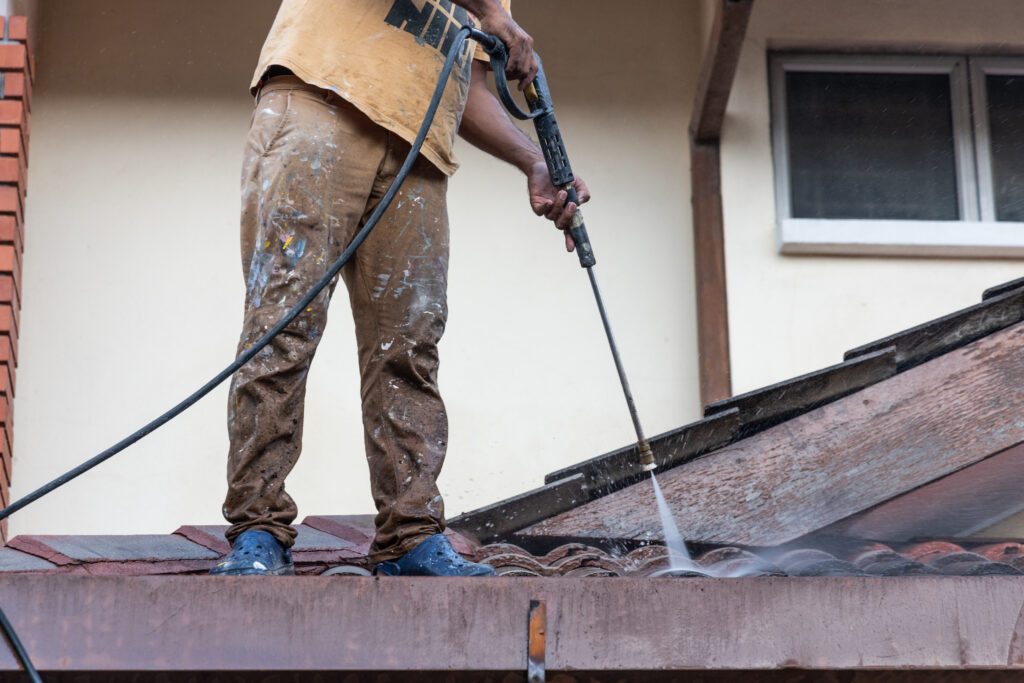
- Inspect Before You Clean
- Start with a visual inspection from the ground or using binoculars. Look for obvious signs of debris, loose shingles, or damage. If you notice anything concerning, call a professional roofing company to handle the cleanup and repairs.
- Use the Right Tools
- A soft-bristle broom or leaf blower is ideal for removing leaves and debris. Avoid pressure washers, as they can damage roofing materials, especially tiles and shingles common in Phoenix homes.
- Be Mindful of Safety
- If you’re cleaning your roof yourself, ensure you have the right safety equipment, including a sturdy ladder, non-slip shoes, and a harness. However, for many homeowners, hiring a professional is the safest option.
- Check Gutters and Downspouts
- While cleaning your roof, don’t forget your gutters and downspouts. Clogged gutters can lead to water pooling on your roof, increasing the risk of leaks and damage.
📞 When to Call the Professionals
While some homeowners may feel comfortable tackling roof cleaning themselves, it’s often best to leave it to the experts. A professional roofing company in Phoenix can:
- Safely clean your roof without causing damage.
- Spot potential problems like cracked tiles, loose shingles, or leaks.
- Perform a thorough inspection to ensure your roof is ready for the coming seasons.
Trust the Experts at Almeida Roofing
At Almeida Roofing, we offer full-service roof maintenance, including cleaning, inspections, and repairs tailored to Phoenix’s unique climate. Winter is the perfect time to schedule a professional roof cleaning and ensure your home is protected for years to come.
Contact us today to book your winter roof maintenance appointment and keep your roof in top shape all year long!
📞 602-743-3175
How to Keep Your Home Warmer with Proper Roof Insulation
As temperatures drop, keeping your home warm becomes a top priority. Proper roof insulation is one of the most effective ways to maintain a cozy indoor environment while reducing energy costs.
Here’s how roof insulation can help and what steps you can take to improve it.
Why Roof Insulation Matters

Heat naturally rises, meaning a poorly insulated roof allows warm air to escape, forcing your heating system to work harder. Quality roof insulation creates a barrier that helps retain heat, keeping your home comfortable and energy-efficient.
Types of Roof Insulation
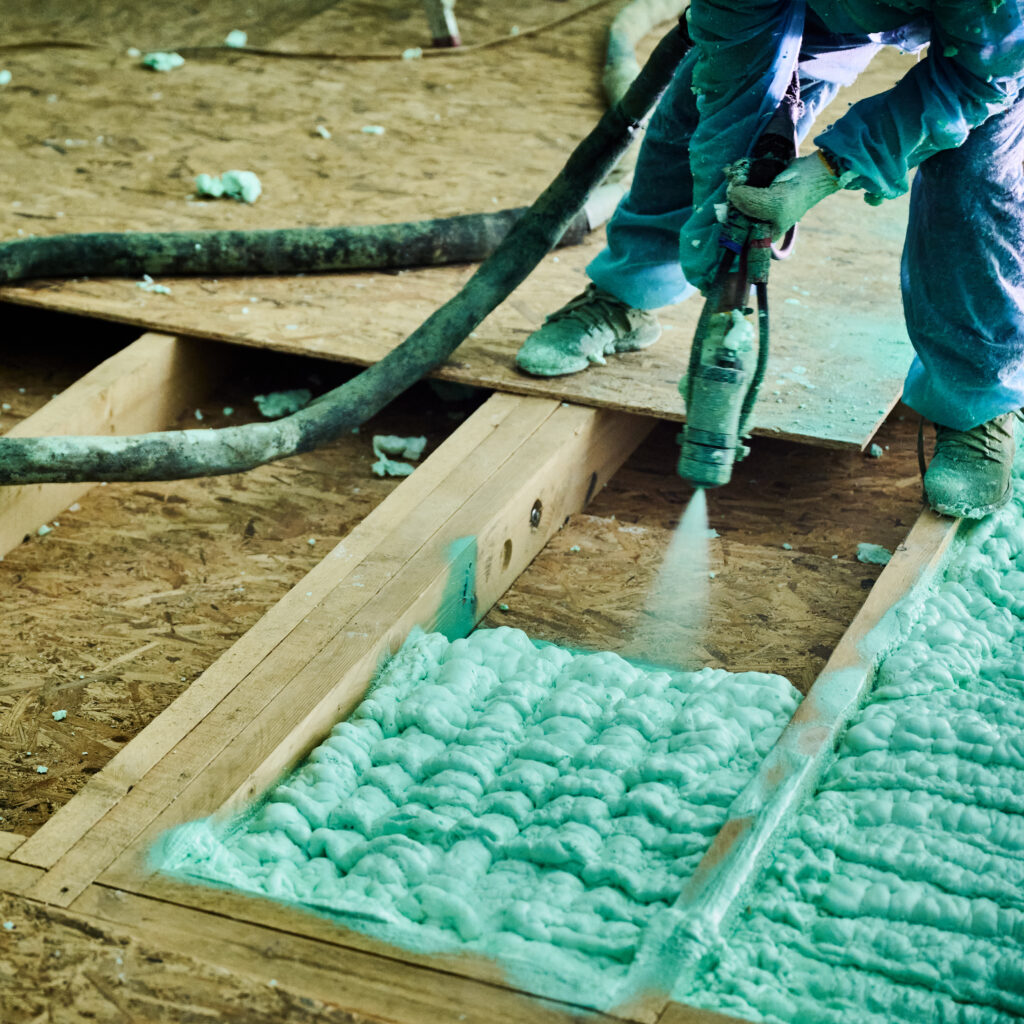
- Batt Insulation: Pre-cut fiberglass or mineral wool panels that fit between roof rafters. Ideal for easy installation in accessible areas.
- Blown-In Insulation: Loose-fill insulation made from fiberglass, cellulose, or mineral wool. Great for filling irregular or hard-to-reach spaces.
- Spray Foam Insulation: Expands on application, sealing gaps and cracks. It provides excellent coverage and thermal resistance.
Tips for Effective Roof Insulation
- Inspect Your Current Insulation: Check for signs of damage like mold, moisture, or thinning insulation, which can reduce effectiveness.
- Seal Air Leaks: Gaps around vents, chimneys, and light fixtures can let warm air escape. Use caulk or weatherstripping to seal them.
- Upgrade to Energy-Efficient Materials: Modern insulation materials have higher R-values, meaning better heat resistance and efficiency.
- Consider Radiant Barriers: In warmer climates, installing radiant barriers can reduce heat transfer and keep your home comfortable year-round.
- Hire a Professional: If you’re unsure about your insulation needs, consult a professional roofer or insulation specialist for an evaluation.
Benefits of Proper Roof Insulation
✅ Lower Energy Bills: Reduce heating costs by keeping warm air inside your home.
✅ Improved Comfort: Maintain a consistent indoor temperature throughout the house.
✅ Environmental Impact: Use less energy, reducing your home’s carbon footprint.
✅ Increased Home Value: Energy-efficient upgrades like roof insulation can boost your home’s resale value.
Investing in proper roof insulation is a smart move for homeowners looking to stay warm during colder months while saving on energy expenses. Regular inspections and timely upgrades can ensure your home remains comfortable and efficient year after year. Reach out to a local insulation expert today and take the first step toward a warmer, more energy-efficient home.
Almeida Roofing
602-743-3175
Top Winter Roofing Problems Arizona Homeowners Face
Arizona’s winter weather might be mild compared to snowy regions, but it still poses unique challenges for homeowners’ roofs. From temperature swings to seasonal storms, Arizona roofs endure conditions that can lead to costly repairs if left unaddressed. Here are the top winter roofing problems Arizona homeowners face and how to prevent them.
Temperature Fluctuations
Arizona experiences warm days and chilly nights during winter, causing frequent temperature swings. These shifts can cause roofing materials to expand and contract, leading to cracks, warped shingles, and weakened seals.

Prevention Tip: Schedule a roof inspection before winter to identify potential vulnerabilities and seal cracks before they worsen.
Wind Damage
Winter storms in Arizona can bring strong winds that loosen or tear off shingles and tiles. Wind-driven debris can also cause damage by creating holes or dents in the roof surface.
Prevention Tip: Inspect your roof after strong winds and clear any fallen branches or debris to avoid long-term damage.
Roof Leaks and Water Damage
Even in a dry climate, occasional winter rainstorms can cause roof leaks if the roofing system isn’t properly sealed. Clogged gutters can exacerbate the issue by allowing water to pool on the roof, leading to water damage and mold growth.
Prevention Tip: Clean gutters regularly and inspect flashing, seals, and roof valleys for signs of wear. Repair leaks promptly to prevent costly water damage.
Tile and Shingle Damage
Roof tiles and shingles are exposed to Arizona’s intense sun year-round. Winter’s cooler temperatures can make already brittle materials more prone to cracking or breaking. Damaged tiles or shingles can expose the roof’s underlayment, increasing the risk of water infiltration.
Prevention Tip: Replace damaged shingles or tiles as soon as possible. Consider impact-resistant materials if a roof replacement is needed.
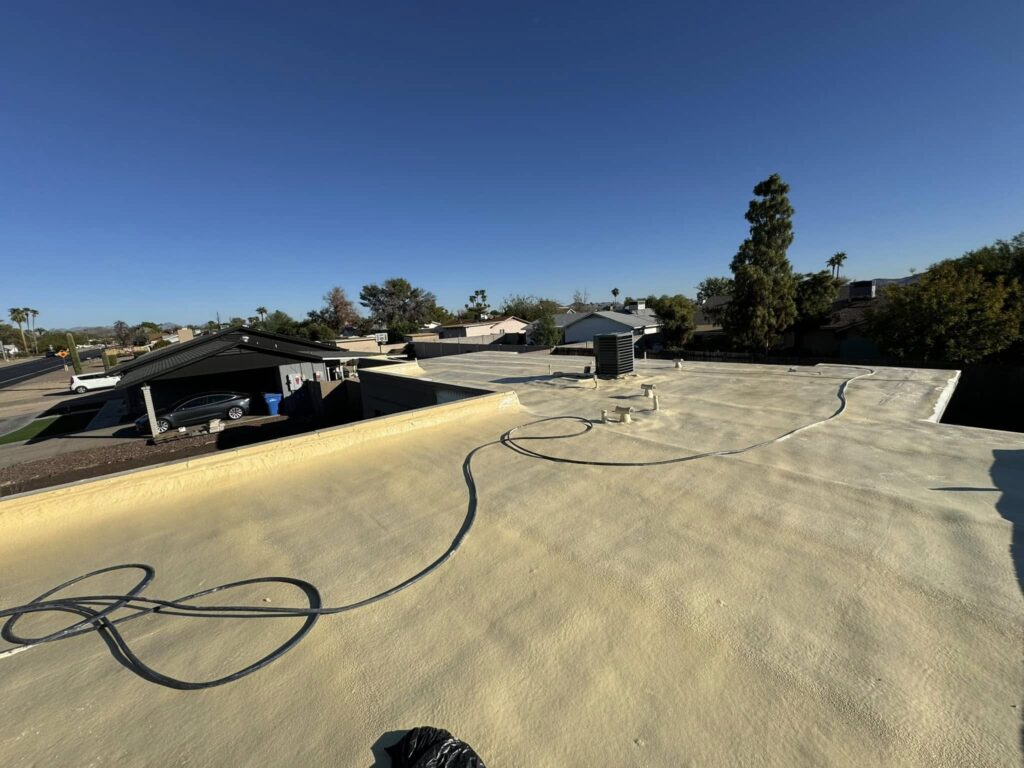
Flat Roof Issues
Flat roofs, common on Arizona homes, can face drainage issues in winter. If water doesn’t drain properly after rain, it can pool and cause leaks, mold, and even roof collapse in severe cases.
Prevention Tip: Ensure your flat roof has proper drainage systems, and schedule regular maintenance to keep drainage points clear of debris.
Improper Roof Insulation
While Arizona homes may not need heavy insulation, inadequate insulation can lead to higher energy bills and uneven indoor temperatures during the winter. Heat loss through the roof can make your heating system work harder.
Prevention Tip: Check your roof’s insulation and add or upgrade it if needed to improve energy efficiency and indoor comfort.
Stay Protected This Winter
Arizona homeowners may not deal with snow and ice, but winter still brings roofing challenges that can’t be ignored. Regular inspections, timely maintenance, and professional repairs are essential to keeping your roof in top condition year-round.
Need a Roof Inspection?
Contact our expert roofing team today for a winter roof inspection. We’ll ensure your home stays safe, dry, and comfortable all winter long.
602-743-3175
How Winter Weather in Phoenix Affects Your Roof
While Phoenix is known for its sunny, warm climate, winter weather can still bring some surprises that may affect your roof. Winter in Phoenix typically involves cooler temperatures, rain, and sometimes even hail, which can have lasting impacts on the structure of your home. Let’s dive into how winter weather can affect your roof and what you can do to protect it.
Cooler Temperatures & Roof Materials
Phoenix’s winters may not bring snow, but temperatures can drop significantly, especially at night. This cooling can cause roofing materials, such as shingles, tiles, or flat roofs, to contract. Over time, this expansion and contraction can weaken materials, leading to cracks, leaks, or loose shingles.

Rainfall & Water Damage
Though Phoenix receives relatively little rainfall throughout the year, winter months tend to bring more rain. Even a small amount of rain can lead to significant roof damage if the roof isn’t properly maintained. Water can seep under shingles, tiles, or flat roofing, leading to leaks inside your home. Water damage can also cause wood rot, mold, and mildew if left unchecked.

3. Hail Storms
While hail storms are not as common in Phoenix, they do occur from time to time. Hail can cause immediate damage to your roof by cracking or denting shingles or tiles. This type of damage may not be immediately visible, but over time, it can cause wear and tear, weakening the roof’s ability to protect your home.
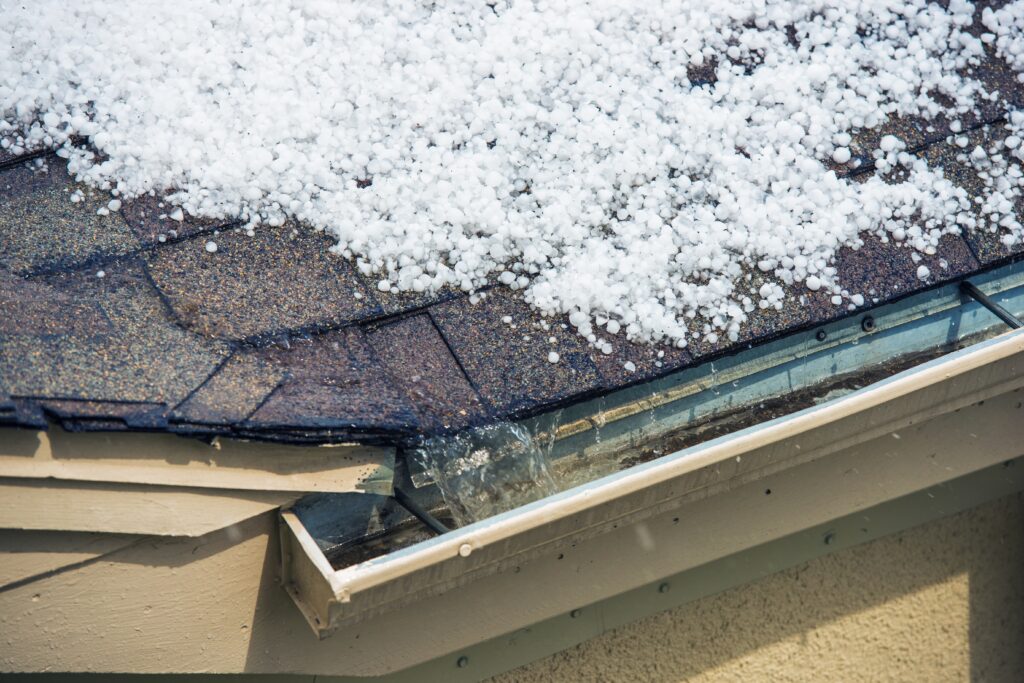
Debris Build-up
During Phoenix’s winter storms, fallen leaves, twigs, and other debris can accumulate on your roof. The debris can trap moisture, which, combined with the cooler temperatures, can lead to mold, moss, or algae growth. Additionally, debris can clog gutters, preventing water from draining properly, which can cause water to pool on your roof and eventually lead to leaks.
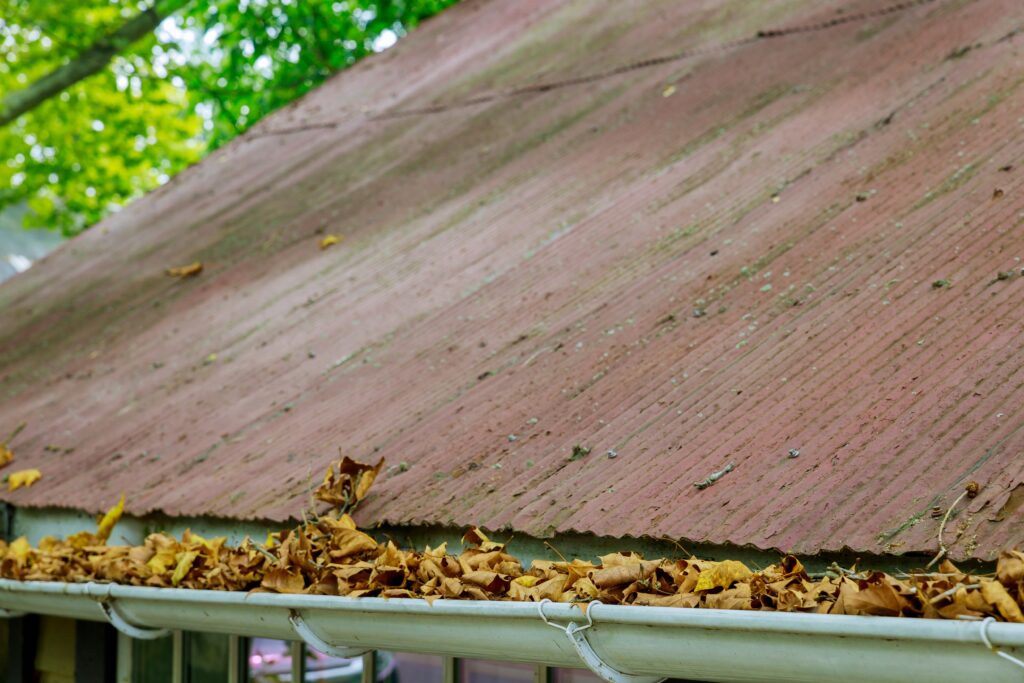
Importance of Roof Inspections & Maintenance
To prevent winter weather from damaging your roof, regular maintenance and inspections are key. Before the winter season begins, make sure to:
- Check for any loose or damaged shingles and replace them.
- Clean your gutters to ensure proper water flow.
- Inspect for any signs of mold, mildew, or water damage.
- Consider installing a reflective roof coating to reduce the effects of temperature changes.
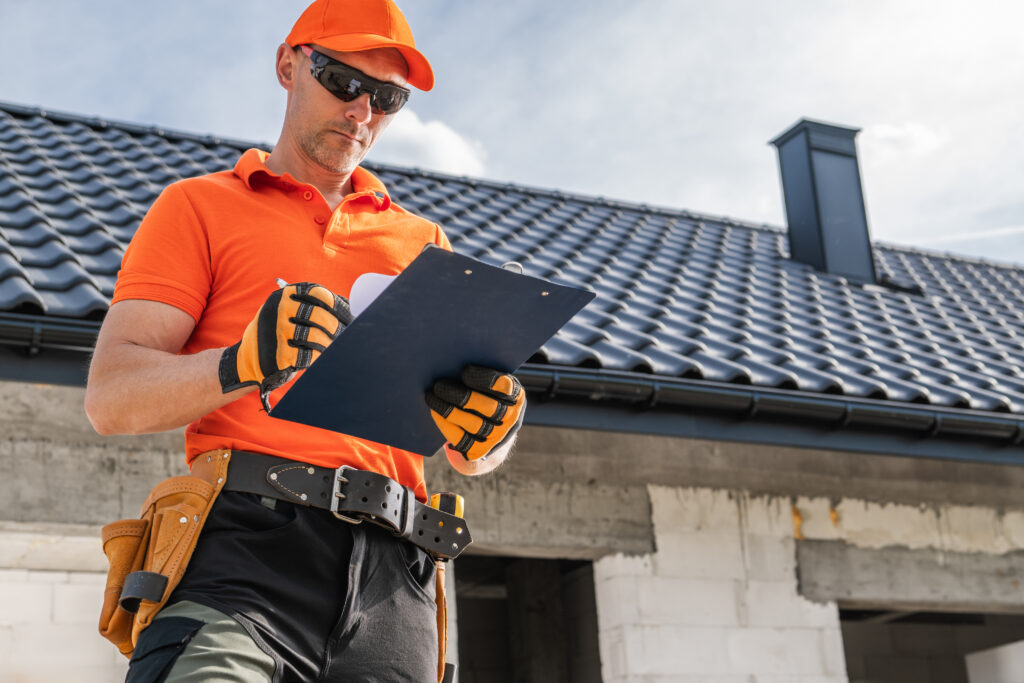
Preparing for the Winter Season
In Phoenix, winter can still bring significant weather that could impact your roof. Preparing your roof for the cooler temperatures and potential storms is crucial for avoiding expensive repairs down the road. A little time spent inspecting and maintaining your roof can save you big on costly fixes later.

Almeida Roofing Inc.- We offer Roof Services
If you’re looking for reliable and professional roof services in Phoenix, Arizona, look no further! Our experienced team specializes in roof inspections, repairs, maintenance, and replacements tailored to the unique climate of the Valley of the Sun. Whether you’re dealing with the wear and tear from the summer heat or the occasional winter storms, we have the expertise to ensure your roof is in top condition year-round. From shingle and tile roofs to flat roof solutions, we use high-quality materials and advanced techniques to protect your home. Contact us today for a free consultation and keep your roof secure for years to come!
602-743-3175
What You Need to Know to Prepare Your Roof- Phoenix, Arizona
When you think of winter in Phoenix, you might imagine cooler temperatures and sunny skies, but it’s still important to prepare your roof for the season. While the Valley of the Sun doesn’t experience the harsh winter weather seen in other parts of the country, occasional rain, chilly nights, and even rare frost can take a toll on your roof if it’s not properly maintained. Taking a few simple steps now can help ensure your roof stays in great condition throughout the winter months.
Here’s how to prepare your roof for winter in Phoenix:
1. Inspect for Damage & Wear and Tear
Even though Phoenix doesn’t get snow, the occasional rainstorm or freezing temperature can cause damage to your roof. Before winter hits, perform a thorough inspection to identify any signs of wear or damage.

- Check for Missing or Broken Tiles: Tile roofs are susceptible to damage from debris, wind, or even minor rain. Look for cracked, broken, or missing tiles that could allow water to penetrate your home.
- Examine Shingles: For homes with asphalt shingles, check for curling, cracking, or buckling. Shingles should be firmly secured to the roof, and any loose or damaged ones should be replaced.
- Look for Leaks: Even in dry weather, leaks can develop around flashing, skylights, or chimneys. Check your attic for signs of water damage or dark spots on the ceiling, which might indicate a hidden leak.
2. Clean and Maintain Gutters
Gutters play an important role in directing water off your roof, especially during the rainy season. Clogged gutters can cause water to pool on your roof, leading to damage or leaks. Even though Phoenix doesn’t get much rain during winter, it’s still essential to ensure your gutters are clean and functioning.
- Remove Debris: Clear leaves, twigs, and other debris from your gutters and downspouts. This will prevent blockages and ensure proper drainage during the winter rains.
- Check for Proper Flow: After cleaning the gutters, check that water flows freely through the system. If water isn’t draining correctly, there may be an issue with the slope or the downspouts.
- Inspect for Damage: Ensure that gutters are properly secured to the roof and that there are no leaks or holes. If needed, reseal any gaps and reinforce loose sections.
3. Trim Overhanging Trees
While Phoenix is known for its desert landscape, many homes have trees that can cause roof damage. Overhanging branches can scrape your roof, dislodge tiles, or allow debris to collect in your gutters.
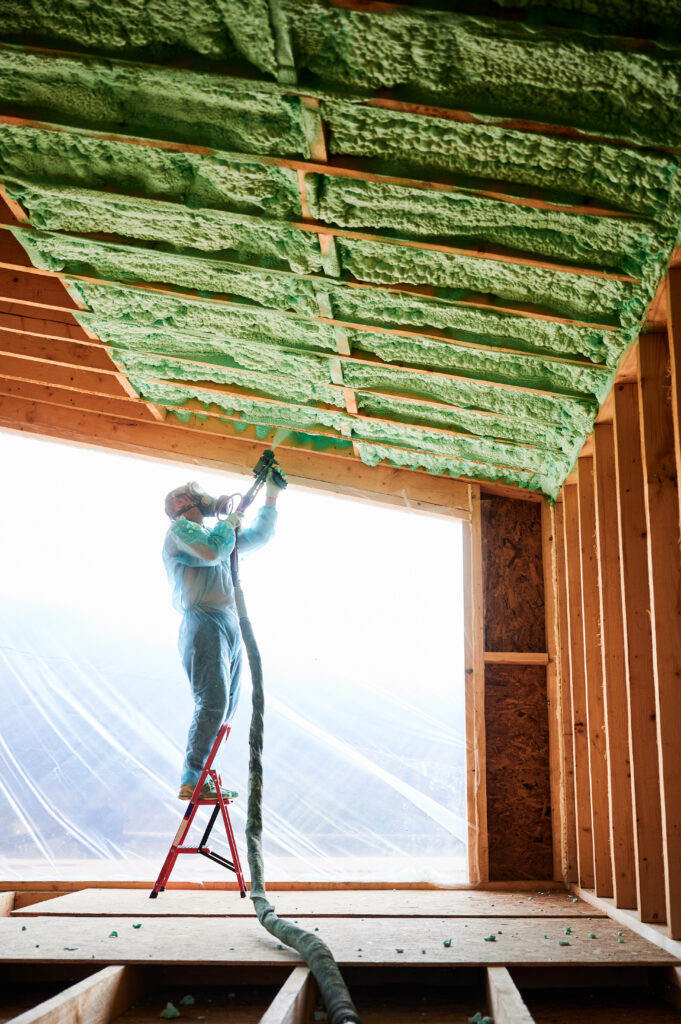
- Trim Tree Branches: Ensure that tree branches are cut back from your roof to prevent damage during winter storms or high winds.
- Clear Leaves and Debris: Trim any dead or overgrown branches that might shed leaves or fall during rainstorms, as these can create blockages in your gutters or become projectiles in strong winds.
4. Check Insulation & Ventilation
Good insulation and ventilation are crucial for maintaining a healthy roof and home throughout the winter.
- Inspect Attic Insulation: Proper attic insulation can prevent heat loss and ensure that your roof stays at a consistent temperature. This can help prevent the formation of ice dams in cooler weather, which can damage roofing materials.
- Ensure Proper Ventilation: Roof ventilation helps to control the temperature and moisture in the attic. Make sure vents are clear and functioning correctly to allow airflow and reduce the risk of mold growth or condensation.
5. Seal Roof Penetrations & Flashings
Areas where your roof meets other structures, like chimneys, vents, and skylights, are vulnerable to water leaks. Inspect the flashings around these areas for any cracks or gaps.
- Inspect Flashings: Ensure flashings are securely fastened and sealed to prevent water from seeping under them. If the flashings looks worn or damaged, replace them to avoid leaks.
- Seal Gaps: Any small gaps around pipes or vents should be sealed with roof-friendly caulking to prevent water from getting in.
6. Consider Roof Coatings or Sealants
If your roof is showing signs of aging or wear, applying a roof coating or sealant before the winter months can help protect it from the elements.
- Reflective Coatings for Energy Efficiency: During mild winters, reflective coatings can help maintain energy efficiency by keeping the attic cooler. This can also prevent moisture buildup and prolong the life of your roof.
- Waterproof Sealants: For additional protection against water, consider applying a waterproof sealant to vulnerable areas, such as seams and flashings.
7. Schedule a Professional Roof Inspection
While you can handle some roof preparation tasks on your own, it’s always a good idea to bring in a professional roofer for a detailed inspection. A roofing expert will spot issues that may be difficult for an untrained eye to detect, such as weak spots in the roof deck or hidden damage beneath roofing materials.
A professional inspection can help identify potential problems before they become costly repairs, saving you time and money in the long run.
Professional Roof Inspections by Almeida Roofing Inc.
At Almeida Roofing Inc., we offer expert roof inspection services to homeowners in Phoenix, Arizona, ensuring your roof is ready for the winter season. Our experienced team thoroughly examines your roof for signs of wear and tear, leaks, damaged shingles or tiles, and potential issues with flashings or gutters. With Phoenix’s unique climate, it’s essential to stay proactive about roof maintenance, and our detailed inspections help identify problems early before they turn into costly repairs. Whether you need a routine inspection or are concerned about specific issues, trust us to provide reliable, professional service and peace of mind. Contact us today to schedule your roof inspection and keep your home protected year-round!
602-743-3175


